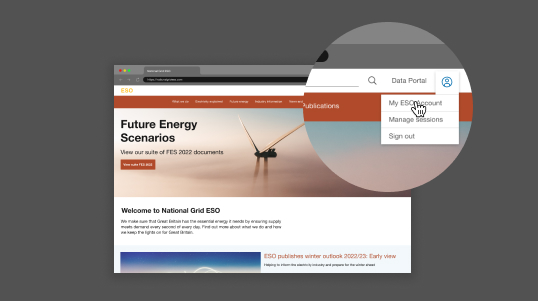
It’s coming ohm: National Grid ESO expects up to 2GW spike during Euro 2020 final
9 Jul 2021 - 2 minute read
At National Grid ESO, we're expecting a 2GW electricity demand pick-up at half-time during Sunday’s match between England and Italy – the equivalent power of around 1.1 million kettles boiling*.
That’s up to 600MW more than the TV pick up seen during half time when England played Denmark in their semi final on Wednesday.
However, the anticipated spike in power won’t beat the all-time record of 2800MW seen at the end of the penalty shoot-out during the 1990 England vs Germany football world cup semi-final (see our image from the archives above).
“TV pick ups aren’t the same today as they used to be” said Gavin Brown, Acting Head of National Control for the ESO. “People consume content through the internet, via satellite and on-demand, so there isn’t one single “end time” anymore. So whilst it’s unlikely we’ll ever see the same surge that we did in 1990, we do anticipate one of the biggest TV picks ups that we have seen in recent years as the nation comes together behind the England team.”
At National Grid Electricity System Operator (ESO), we balance the country’s electricity supply and demand second-by-second, forecasting the power that will be required based on factors like the weather and consumer behaviour.
Major events that draw large television audiences – like sports fixtures, popular shows and royal weddings – can often produce a surge in electricity demand during natural breaks (like half-time or advertisements) as people make a cup of tea, open the fridge and flush the loo all at the same time.
Having forecasts in place means our control room is prepared and ready to draw on electricity generation quickly to meet any sudden changes in demand.
We have a range of tools at its disposal to do this, notably the balancing mechanism – essentially a marketplace for electricity – which allows us to access sources of extra power in real-time.
If the forecasts predict demand increases, the ESO can keep a number of power stations on reserve, ready to deliver additional electricity if needed.
|
TV moment |
Pick-up |
|
2020 UEFA EURO semi-final – England vs Denmark |
1,400MW at half-time |
|
2019 Rugby World Cup Final - England vs South Africa |
1,350MW at half time |
|
2011 Royal Wedding (Prince William and Kate Middleton) |
1600MW |
|
2001 “Who shot Phil” Eastenders episode |
2290MW |
|
1990 England vs Germany football World Cup semi final |
2800MW at the end of the penalty shoot-out |
|
1966 England vs West Germany football World Cup final |
600MW after Geoff Hurst's iconic final goal |
*2GW also equals 20 million LED TVs or 5.7 million Playstation 5’s OR 17 large Hadron colliders.
